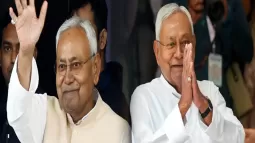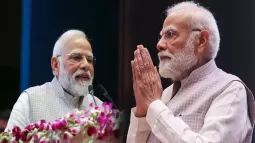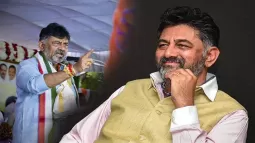
Critics often say Nitish Kumar is aging, losing balance, and switching sides for power. Supporters describe him as a sharp political strategist who understands political shifts ahead of time. The recent Bihar Assembly election results have proved that his public image as Sushasan Babu remains intact. The voters continued to support the JDU-led alliance by giving the alliance more seats than ever.
Continued Leadership and Political Influence
The NDA coalition led by Nitish Kumar has won another big victory in Bihar elections. The voters have rejected the corruption charges and strengthened his position as the longest-serving Chief Minister of Bihar. His strategies once again underlined why he is often called a political Chanakya.
Early Life and Entry into Politics
Nitish Kumar was born in 1951 in Bakhtiyarpur near Patna. His father was a freedom fighter and Ayurvedic practitioner, and his mother was a homemaker. He studied electrical engineering from Bihar Engineering College, now NIT Patna. He briefly worked with the State Electricity Board but resigned to pursue politics.
He was involved in the political movement during his student days and participated in the movement of Jayaprakash Narayan where he met Lalu Prasad Yadav and Sushil Kumar Modi.
Electoral Journey and Ministerial Posts
He then contested assembly elections in 1977, 1980, and 1985, winning for the first time in 1985. Later, he moved into national politics and was elected MP multiple times between 1989 and 2004. He handled portfolios like Railways and Agriculture in NDA governments.
His decisions to introduce online ticket booking, Tatkal services and new railway booking centers left an indelible mark. He resigned as Railway Minister following a train accident in Bengal in 1999. Nitish Kumar served as Bihar Chief Minister for a week in 2000 before returning to central politics. He returned to state politics in 2004 after the NDA lost power at the Centre.
Legislative Council Route and Rise as Chief Minister
Nitish Kumar stopped contesting assembly elections after 1985. When he returned to state politics, he chose the route of the Legislative Council, explaining that this allowed him to focus on all constituencies.
In 2005, the Nitish–Vajpayee campaign turned the tide of public sentiment against RJD and brought NDA to power. Nitish then began his long tenure as Chief Minister. His administration emphasized law-and-order reforms, public welfare, and governance transparency. He kept his family away from political involvement to maintain a clean image, which even his opponents acknowledge.
Shifting Alliances and Political Adaptability
The rise of Narendra Modi recast Bihar politics. Nitish Kumar initially avoided sharing platforms with Modi because of the 2010 Gujarat-related controversies. Subsequently, after the defeat of the NDA in the general elections in 2014, Nitish Kumar resigned and made Jitan Ram Manjhi the Chief Minister. With the support of Congress and RJD, he came back as Chief Minister in 2015. Later, he broke that alliance and went back to the NDA. After changing sides in 2022 and coming back to the NDA before the general elections of 2024, he became the vital player in central politics. Despite BJP not declaring its Chief Minister candidate, both Modi and Shah publicly expressed support for contesting the election under the leadership of Nitish, reflecting his strong political influence.
Strategy and Connection with Voters
Nitish Kumar has a pragmatic and flexible political approach. In different elections, he emphasized the issues such as ending ‘Jungle Raj’ or support to backward classes. Ahead of the recent elections, the government came up with 125 units of free electricity and introduced the Chief Minister Mahila Rozgar Yojana, where ₹10,000 was transferred to women's bank accounts. He also introduced an employment-focused agenda. With these programs, strong public support came once again for the NDA.














